Hi Susun,
I am in my twenties but having issues with energy and fatigue. I am working a lot and have a lot on my mind so I am finding it hard to fall asleep and get good sleep every night. I am always exhausted. Do you have any tips for natural ways to keep one’s energy up and get restful sleep at night? I don’t want to go back to my bad caffeine addiction…! I worked so hard to quit coffee last year but it is getting very tempting again.
Susun Weed’s response:
Almost every woman has, at one time or another, felt so fatigued she wanted to cry. But for some women, and for a variety of reasons—including menopause, caring for a new-born, working odd hours, chronic anxiety, and poverty, to name only a few—fatigue is a constant, not an occasional, problem.
Stimulants don’t really give us more energy, though they are what many women turn to when they feel too tired. Stimulants create false energy, leaving us more exhausted at deeper levels. One more cup of coffee, one more soft drink, one more jolt of fear increases energy, to be sure. But these choices also deplete our bones of their minerals, weaken our core energy, and prevent truly restful, restorative sleep. Even herbal stimulants, like cayenne and guarana, are, well, stimulants. They push us too hard and erode our long-term health.
Are there ways to boost energy that are effective and healthy? My guide, Grandmother Growth, gave me some ideas of how to help myself when I feel bone-tired. And I gathered together the best remedies I know, plus the wisdom of my Wise Woman friends, so you can help yourself, too, when you are too weary for words.
“Fall into my arms and sleep,” offers Grandmother Growth. “You don’t have to make things happen; they will happen on their own. Let me hold you. Let go. Don’t resist. Rest. You are working hard. You are delving deep and changing yourself. Of course you are tired. Change is hard work. Rest in my strong arms. Let go. Give your weariness to me. Let go of all that worries you. Surrender yourself into my strength. Take courage from me. Let me support you. Let me ease you. Let go.”
Extreme fatigue indicates a profound need to do nothing. Ask family and friends to give you a day totally off . . . and take it! Barricade yourself in your room if need be (or, like the cartoon character Sylvia, in the bathroom).
Be gentle with yourself. The internal processes that occur during puberty, motherhood, menopause or any other profound change in your life require tremendous amounts of energy. Even if you provide yourself with very high quality nutrients and use your energy wisely, you may still feel unreasonably tired. Many cultures offer new borns and moms a quiet, alone month or more, allow menopausal women to retire for a year or more while they Change, and give grieving parents/partners/children/friends time off from responsibility. If yours doesn’t, if you can’t, at least be gentle with yourself.
Give yourself a break: Every hour, take a 60-second break. Breathe deeply; stand up and stretch; drink a glass of water or some herbal infusion. Schedule a regular time to meditate or take a nap every day. Small frequent rests help more than an extra hour of sleep; but do both if you can.
Set aside an hour a week to do something indulgent for yourself: a long soak in a hot bath, a manicure, a walk alone in a beautiful place. Nourish yourself and you will have more energy to give to others.
Treat yourself to a massage once a month. (It need not break your budget; find someone willing to barter for a skill or product you have.) A skillful massage releases tension, helping you get more benefit from your sleep and downtime, thus liberating more energy and helping you begin the upward spiral into increased vitality.
“Lower your standards.” This advice, though difficult to hear, has been one of the most important guidelines for me in choosing a life that delights and energizes me. It helped me choose to let the floor go upswept, the dishes unwashed, the bed unmade, while I gardened, or studied, or even just went for a walk in the woods. When I do the things I want to do I have LOTS more energy. What are you doing that saps your strength and erodes your delight in life? Find a way to quit, or at least cut down on the time you devote to it.
List ten good things about fatigue, laziness, lethargy, and procrastination. I’ve found laziness to be my best guide to efficiency; lethargy has stopped me from taking foolish risks; and procrastination helps me find more efficient ways to proceed. Love and honor your fatigue for helping you conserve energy and giving you the time to find creative new ways to do the same old things.
Seaweeds of all kinds help restore energy by nourishing nervous, immune, and hormonal systems. Make it a habit to eat seaweed as a green vegetable at least once a week. Try kelp in your oatmeal, wakame in your beans, kombu in your soups, hijiki salads, toasted dulse, sea palm fronds, and deep-fried nori!
Counter that tired-every-day feeling: Get down and get grounded energy from roots. Try a tincture of ginseng, siberian ginseng, yellow dock, or dandelion roots. A dose is 10-20 drops of any one root, taken with meals.
Tired blood? You may need more iron: eat a spoonful of molasses or try a dropperful of yellow dock tincture several times a day.
Stir it up! Don’t just sit there! Energy is attracted to energy. Get moving this way: Stand up, feet shoulder-width, knees relaxed. Swing your arms toward one side, then the other. Let the shoulders and hips move as you twist your upper body. Let your arms move freely. Continue for a minute or two. Then, start rocking your tail bone, your whole pelvis, forward and back, forward and back, again for at least a minute. Alright!
Green is the color of plant energy. The plants with the deepest green give you the most energy. A daily cup of nettle infusion increases energy without wiring your nerves. Nettle strengthens the adrenals, allowing you to tolerate more stress with less harm. And it nourishes your immune system, too. To make it: Put one ounce of dried nettle leaf in a quart jar. Fill to the top with boiling water. Cap tightly and steep at least four hours (overnight is fine). Strain and drink. Refrigerate the remainder and consume within 36 hours. (Leftovers may be used as a hair rinse or fertilizer for your house plants.) I drink several quarts of nettle infusion every week. It helps me have the energy to teach all day and write for hours each evening.
Oatstraw infusion builds deep energy for the next day, especially when you have been riding an emotional roller coaster. Oatstraw nourishes the nerves, easing anxiety and improving our ability to live with uncertainty. Make it like the nettle infusion, using a full ounce of oatstraw to a quart of boiling water. OK to drink it hot or cold, with honey or miso, or any other addition (juice, coffee, whiskey) you desire. Remember to refrigerate the infusion after it has brewed 4-8 hours, even if you don’t get a chance to
strain the plant material out.
Eat more. When you’re too tired to eat, you get more tired. (If this sounds like an old wive’s tale, remember that old wives were the wise women. But, actually, it’s the latest scientific thinking.) In addition to at least one really good meal a day, eat high quality snacks hourly.
Though it seems contrary, St. Joan’s wort (Hypericum) tincture relaxes the nerves yet increases energy. A dose is 25-30 drops several times a day, including before bed. You’ll sleep better, ache less, and wake up with more energy and a brighter outlook on life.
Warming herbs such as ginger and cinnamon increase energy (but may increase hot flashes, too). Make a tea with 1 cup/250 ml boiling water and 1/2-1 teaspoon (1-2 grams) of the powder of any one of these.
Very tired women need more fuel, that is, more fat, in their diets, and best if the fats are also natural sources of vitamin E: avocados, peanut butter, sunflower seeds, tahini, and olive oil are good food sources. Herbs rich in vitamin E include nettle, seaweeds, dandelion, and watercress.
B vitamins build energy. Find them in whole grains, organ meats, sweet potatoes, avocados, egg yolks, fish, and whey. Both oatstraw and nettle infusions are good sources of B vitamins, as are red clover blossom infusion, peppermint leaves, and fenugreek seeds.
Low levels of potassium, iron, and iodine contribute to fatigue. Celery, cabbage, seaweeds, nettle infusion, and red clover infusion are excellent sources of potassium. Molasses, chocolate, seaweeds, nettle infusion, and dandelion leaves are all superb sources of iron. For iodine, seaweed shines, but sea salt, mushrooms, and greens grown in gardens fertilized with seaweed also supply significant amounts.
Avoid
Some women report greater fatigue on days when they’ve eaten frozen or raw food. Traditional Chinese Medicine says eating raw or chilled foods, especially cold drinks and raw juices, contributes to fatigue because you have to use your internal energy to warm up the food before you can digest it. The more tired you are, the greater your need for well-cooked foods, like nourishing herbal infusions and healing soups.
I avoid wheat grass juice, green barley powder, spirulina, and all blue green algae. None are as nourishing as nettle infusion, and all are considerably more expensive, more difficult to make yourself at home, and more likely to be sold through multi-level marketing.
“Energy-producing” foods/drugs/herbal supplements such as coffee, guarana, caffeinated drinks, and excessive amounts of black tea or chocolate will create greater fatigue in the future.
“Rest your head down on me,” crones Grandmother Growth. “For this moment, rest in me. Let the energy of the earth infuse you. Let my energy carry you. Let yourself be enough. Let go.”
The above is based on material found in New Menopausal Years, the Wise Woman Way: Alternative Approaches for Women 30-90.
Green blessings, Susun Weed
photos: Wise Woman Spiral © iStockphoto.com / Chuck Spidell | As Above, So Below © 2006 Wendy Wilkerson

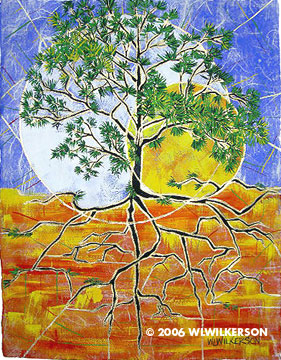

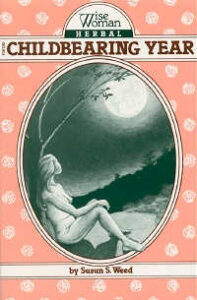
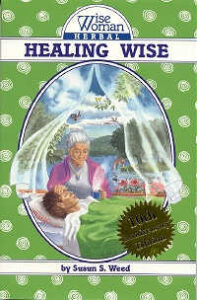

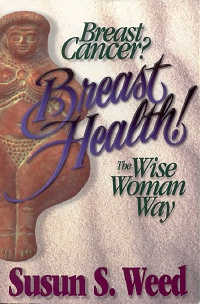
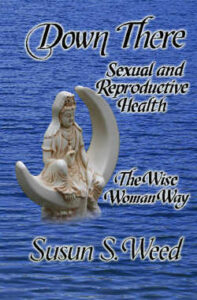
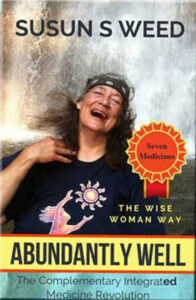



0 Comments